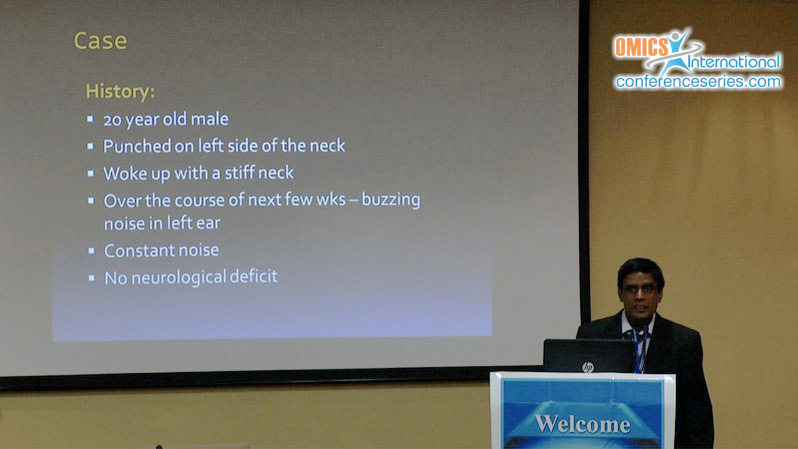
Biography
Biography: Anantha Ramanathan
Abstract
History: A fit 20 year old male personal trainer presented with a history of hearing a continuous buzzing noise in his left ear for about a month. The noise was present at all times and interfered with his daily activity and sleep. He was otherwise healthy. He could not remember how it started but on being questioned about trauma he volunteered that he was involved in an altercation about a month before, and was punched in the left side of the neck. Though he did not lose consciousness, he had a stiff neck from the next morning for a few days. There was no hearing impairment. Examination: Physical examination revealed that the main abnormality was a palpable thrill and an audible continuous bruit at the apex of the left posterior triangle of the neck, radiating towards the left ear. A diagnosis of AV fistula was made. Investigation: The initial duplex scan and MRI could not demonstrate the AV fistula but a second duplex scan demonstrated high velocity flow in the internal jugular vein (PSV 423cm/sec). The V3 segment of the vertebral artery showed high flow low resistance pattern (PSV 395cm/sec; EDV 175 cm/sec) with a lot of turbulence. A diagnosis of vertebrojugular AV fistula due to blunt trauma was made. The right vertebral artery was normal. Treatment: The condition was treated successfully by endovascular placement of detachable coils proximal and distal to the lesion in the left vertebral artery, with Onyx (TM) injection of the fistula itself. The vertebral artery was sacrificed without any clinical consequences. Discussion: Vertebral artery AV fistulae are rare and usually occur after trauma. The V3 segment of the artery is most at risk as the artery leaves the protective environment of the vertebral foramina to enter the foramen magnum. The artery is relatively superficial in this situation and can be injured. Blunt trauma of the area is the commonest cause. This patient was relatively lucky. In Australia we had a recent high profile sporting tragedy where a young cricketer died after being struck in this region by a cricket ball. In that case the vertebral artery bled inside the cranium, causing rapid decompensation.


